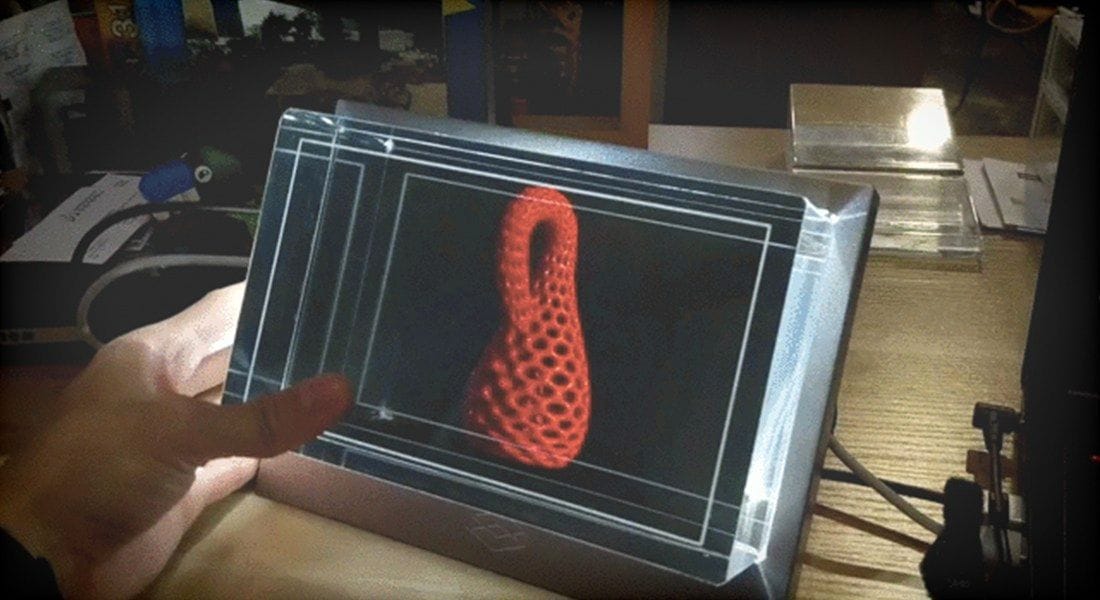![A holographic Display For 3D Content Creators [Source: SolidSmack.com]](https://fabbaloo.com/wp-content/uploads/2020/05/image-asset_img_5eb0a907526b5.jpg)
Rather than forcing chunky peripherals on your head or hands via VR or AR, real holograms are the stuff of science fiction: true interactive displays which humans can interact with on a more personal level.
The day when such a display would come to fruition was thought to be right up there with flying car tech – meaning it would never happen.
Well, you might want to take a closer look at the Looking Glass – a holographic display which uses lightfield and volumetric technologies to bring the science fiction fantasy to reality.
This thing is the real deal. Instead of having groups of people take turns using interactive hardware, all of them can use the Looking Glass simultaneously. 45 different angles of a 3D image are projected onto the display at 60 fps, letting you see the complete picture from different positions. You can then push, pull, and move the images on the screen, just as you would using a VR or AR application.
![The Looking Glass holographic display set up and ready for work [Source: SolidSmack.com]](https://fabbaloo.com/wp-content/uploads/2020/05/image-asset_img_5eb0a907ecacb.jpg)
Apps on the display use a HoloPlay Unity development kit and can be downloaded for free on an App Library in the Looking Glass. Holo film shorts, virtual pets, volumetric video clips, CT-scan/DICOM importers, and more can be downloaded from the get-go, with the ability for content creators to upload their own apps onto the library for others to use.
In case you were wondering, the Looking Glass supports all your old 3D files, from OBJ, STL, gLTF, to FBX formats. It even works with programs you’re already familiar with. Blender, Maya, Zbrush, Tinkercad, and Solidworks compatibilities are already being developed with more on the way.
Read the rest at SolidSmack.com











An Austrian company has developed an incredibly sophisticated end-to-end automation system for metal 3D print post processing.